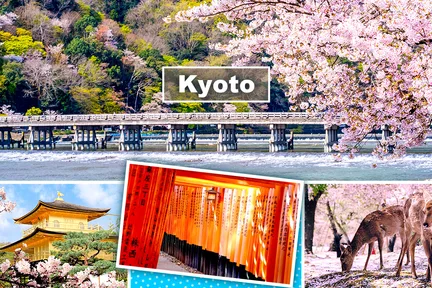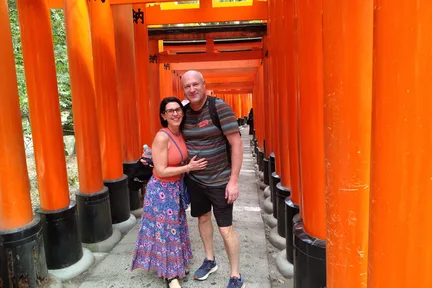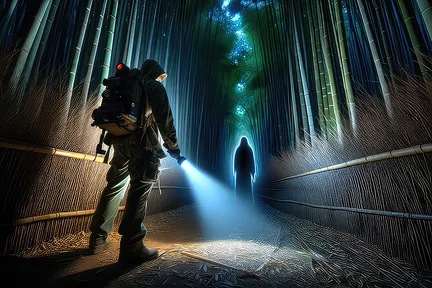Togetsukyō Bridge
The best of Togetsukyō Bridge
Bucket-list experiences
Make it a getaway
Trouble-free transport
All that's good & tasty
More to explore
Why people love Togetsukyō Bridge
Nearby places to go
FAQs about Togetsukyō Bridge
When is the best time to visit Togetsukyō Bridge in Kyoto?
How can I get to Togetsukyō Bridge in Kyoto using public transportation?
Is there parking available at Togetsukyō Bridge in Kyoto?
What unique experiences can I enjoy near Togetsukyō Bridge in Kyoto?
What to know before visiting Togetsukyō Bridge
Remarkable Landmarks and Must-Visit Sights
Togetsukyō Bridge
Step into a world where history and nature intertwine at the iconic Togetsukyō Bridge. Spanning 155 meters, this architectural marvel offers breathtaking views of the Katsura River and the surrounding landscapes of Saga Arashiyama. Whether you're visiting during the cherry blossom season or the vibrant fall, the bridge's picturesque setting is sure to captivate your senses. Its historical significance and poetic name, inspired by Emperor Kameyama's vision of a moonlit crossing, make it a must-visit destination for any traveler.
Rickshaw Rides
Embark on a nostalgic journey with a rickshaw ride across the Togetsukyō Bridge. Feel the charm of a bygone era as you traverse this iconic landmark, capturing the essence of traditional Japan. The gentle rhythm of the rickshaw and the stunning views of the river and surrounding scenery create an unforgettable experience that transports you back in time.
Dining Experiences
Savor the flavors of Kyoto with delightful dining experiences at the numerous restaurants located at either end of the Togetsukyō Bridge. Indulge in local culinary delights while enjoying the stunning views of the bridge and its scenic surroundings. Whether you're in the mood for a quick snack or a leisurely meal, the dining options here offer a perfect blend of taste and tradition.
Cultural Significance
Togetsukyō Bridge is a cultural gem in Kyoto, where tradition comes alive. Imagine witnessing a heartwarming initiation ceremony where local children, adorned in vibrant kimonos, cross the bridge after receiving blessings from a nearby temple. This ritual, rich in tradition, is believed to bring good fortune if completed without looking back. Additionally, the bridge's allure has made it a favored backdrop for period films, capturing its historical essence. The name 'Togetsu,' meaning 'moon crossing,' adds a poetic touch, inspired by a tale from the Kamakura period involving Emperor Kameyama.
Historical Background
Togetsukyō Bridge is a testament to history, with its origins tracing back to 836. The current structure, completed in 1934, cleverly combines tradition with modernity. While it exudes a classic wooden appearance, the bridge is actually reinforced with concrete, ensuring durability. The cypress parapets add a touch of traditional charm, making it a perfect blend of the old and the new.
Seasonal Beauty
Arashiyama, the picturesque mountain south of Togetsukyō Bridge, offers a visual feast throughout the year. In spring, the area bursts into life with cherry blossoms, while autumn transforms it into a canvas of fiery red maple leaves. Winter brings a serene landscape, reminiscent of an ink painting, making it a must-visit for nature lovers and photographers alike.
Cultural and Historical Significance
For over a millennium, Togetsukyō Bridge has been a silent witness to history. Originally built in 836, it has faced numerous challenges, including floods. The 1934 reconstruction in concrete ensured its survival, preserving its historical essence while enhancing its resilience. This blend of cultural and historical significance makes it a captivating destination for travelers seeking to connect with Japan's rich past.
Explore more on Klook
Top attractions in Kyoto
- 1 Gion
- 2 Arashiyama
- 3 Nishiki Market
- 4 Kiyomizu-dera
- 5 Nijō Castle
- 6 Arashiyama Bamboo Forest
- 7 Fushimi Inari Taisha
- 8 Kyoto Imperial Palace
- 9 Golden Pavilion Temple
- 10 Kamo River
- 11 Pontocho
- 12 Ninenzaka
- 13 Fushimi Inari Taisha
- 14 Higashiyama
- 15 Sanjusangen-do Temple
- 16 Fushimi Jikkokubune
- 17 Tetsugaku No Michi
- 18 Funaoka Onsen
- 19 Maruyama Park
- 20 Sagano Bamboo Forest




